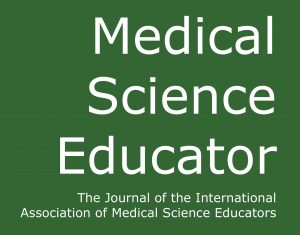
Every month, the IAMSE Publications Committee reviews published articles from the archives of Medical Science Educator or of its predecessor JIAMSE. This month’s review is taken from MSE volume 28.
Medical Education needs to adapt to the needs of our future physicians so that we can ensure that we are preparing them to care for the health of their future patients. Because, in the words of the author, “the nature of contemporary disease has changed profoundly over the last century”, our current health care model and the methods we use to train health care providers are inadequately addressing these needs. One approach to address this challenge is discussed in a recent article entitled: Lifestyle Medicine: Why Do We Need It?, published in Medical Science Educator, December 2018, Volume 28, Supplement 1, pp 5–7, by author Hanno Pijl from the Department of Internal Medicine, Section of Endocrinology at Leiden University Medical Center, Leiden Netherlands.
Dr. Pijl presents an impassioned argument for the inclusion of Lifestyle Medicine as an essential component of education for health care providers. The American College of Lifestyle Medicine provides a definition of Lifestyle Medicine: “Lifestyle Medicine involves the use of evidence-based lifestyle therapeutic approaches, such as a predominantly whole food, plant-based diet, regular physical activity, adequate sleep, stress management, avoidance of risky substance use, and other non-drug modalities, to prevent, treat, and, oftentimes, reverse the lifestyle-related, chronic disease that’s all too prevalent.”
The need for education in Lifestyle Medicine is dictated by changes in disease prevalence. Due to the advances of antibiotics and anesthesia, the predominance of infectious disease and surgical emergency in the nineteenth and early twentieth century has shifted to chronic conditions. The author characterizes the profound change in the nature of contemporary disease as “a tsunami of chronic, “age-associated,” non-communicable disease.” These diseases include heart disease, stroke, cancer and diabetes. These are now the most common, costly, and preventable health problems in the world. For example, the National Diabetes Statistics Report published by the Center for Disease Control and Prevention in 2017 found that 30.3 million people have diabetes (9.4% of the US population) and 84.1 million adults aged 18 years or older have prediabetes (33.9% of the adult US population). Although Type II diabetes, which has been called a global epidemic by the World Health Organization, was once thought to be incurable, numerous studies have now reported that lifestyle interventions have been successful in reversing this disease.
The author’s first contention is that there is a mistaken assumption that chronic and non-communicable diseases are an inevitable consequence of the aging process. He states that the accumulation of damage in aging, due to an imbalance of cell damage and repair, is influenced by lifestyle factors such as nutrition. Moreover, he argues that most chronic disease is the result of an interaction between our genes and the environment and that behavioral and environmental cues trigger illness. Examples of these cues include “too much of the wrong food, prolonged stress, lack of physical exercise, bad sleep, smoking, and toxins.”
The author describes multiple ways in which our current health care model is unsuited to our current epidemic of chronic non-communicable disease. The author contrasts the multifactorial diseases of today with the unifactorial diseases of previous times and contends that these are less amenable to the drug-centered approach of our current health care model. In addition, he argues for the importance of the inclusion of the patient’s psychosocial aspects in the diagnosis of disease. He argues that the integration of Lifestyle Medicine into our health care model will shift us to the prevention of disease with lifestyle adaptation as a primary treatment to restore health.
Dr. Pijl also argues for the need for patients to take responsibility for their health and that the role of the healthcare provider should be that of an advisor. The success of this change of roles rests on the necessity of ensuring that both patient and healthcare provider are well educated on the origins of disease and the possibilities for restoring health. The author concedes that “it is very difficult indeed to live a healthy life in the context of the current society.”
As an Endocrinologist and educator treating patients with diabetes, this article comes as a report from the front lines. The author concludes that “since our modern lifestyle plays a crucial role in the etiology of these disorders, lifestyle medicine needs to be an integral part of our strategies to tackle the huge health threats we face today.” We can hope that our leaders in medical education can embrace this challenge and champion this approach to reforming healthcare education.
Ann Poznanski, MD, PhD
Member IAMSE Publications Committee
Member IAMSE Board of Directors